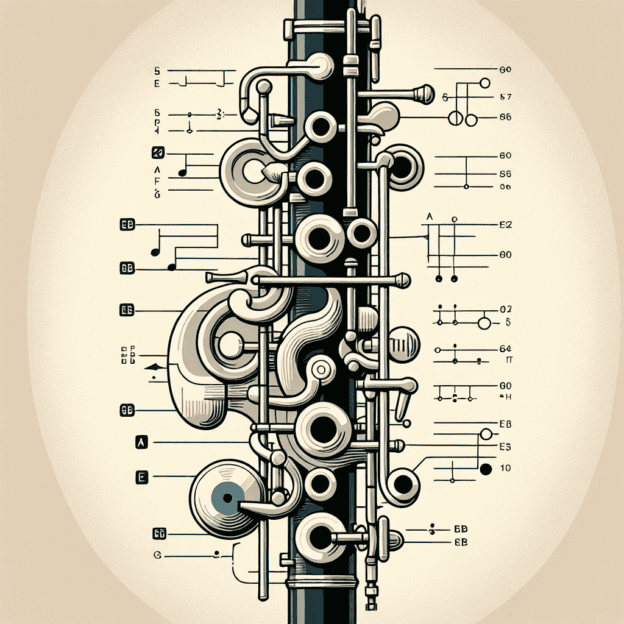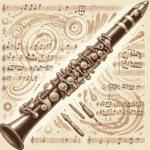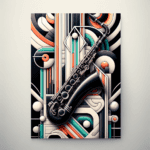Clarinet design incorporates many subtle details that influence how musicians play and personalize their experience. The left-hand Eb key design, though often overlooked, significantly impacts technique, comfort, and overall feel. If you've struggled with smooth note transitions or wondered why some clarinets fit your hands better than others, this small feature might be the answer. Let's examine what sets apart clarinet left hand Eb key designs.
At first glance, a clarinet's keys appear to form a perfect puzzle, but Eb key placements vary. This key is frequently used in fast passages, making its ergonomics crucial. Designers position the left-hand Eb key differently based on the clarinet's make and model, sometimes adjusting its height, angle, or spacing relative to nearby keys. Martin Freres models, for example, are known for their well-balanced key placement, offering easy access without hand strain.
However, what works for one musician might not suit another. Players with smaller hands may prefer certain designs, while those with larger hands might favor more widely spaced keys. This isn't just about comfort; your finger movement efficiency affects everything from speed to stamina during long practice sessions or performances. A well-positioned left-hand Eb key allows your fingers to move naturally, enabling smoother transitions and reducing strain.
History of Eb Key Design
History has shaped clarinet design. Early clarinet production often featured standard layouts that didn't accommodate the variety of hand sizes and techniques among players. This led to increased demand for improved ergonomics and alternative designs. Modern designers, including those at Martin Freres, have responded by offering more refined adjustments to the left-hand Eb key's placement and structure.
| Era | Eb Key Design Characteristics |
|---|---|
| Early Production | Standard layouts, limited ergonomic consideration |
| Mid-20th Century | Increased focus on ergonomics, alternate designs emerge |
| Modern Era | Refined adjustments, player-specific customizations |
The tactile feel of this key is noteworthy. Clarinetists rely on finger feedback during rapid passages. A poorly designed Eb key can feel imprecise or awkward, affecting confidence in challenging sections. Quality clarinets use precise engineering to provide the Eb key with optimal resistance and response. If you've compared multiple clarinets, you may have noticed how slight changes in this resistance affect the key action's natural feel under your left hand.
Learning and Mastering the Eb Key
For students, mastering the left-hand Eb key is similar to breaking in new shoes. It takes time to develop muscle memory for the specific spacing and spring tension of a particular instrument. While some students find controlling the key challenging, those using thoughtfully designed brands like Martin Freres often find the layout intuitive and supportive of good hand positioning.
Advanced players highlight the importance of alternate fingerings involving the left-hand Eb key. These alternatives allow for smoother phrasing or easier navigation of awkward intervals, depending on the musical passage. The key's placement and accessibility directly impact these fingerings' effectiveness, which is why many professionals prefer clarinets with strong ergonomic designs.
Maintenance and Adjustments
Even the best designs require maintenance over time. A common issue is weakening left-hand Eb key springs, resulting in slow key action. Regular upkeep can resolve this by replacing or adjusting spring tension. Repair technicians often make minor adjustments to key height or alignment to ensure a perfect fit for the musician's hand. If you own a well-crafted clarinet, like the enduring Martin Freres models, these small tweaks can further enhance your playing experience.
Choosing the Right Clarinet
A frequent question is how to choose a clarinet if the left-hand Eb key doesn't feel right. The answer involves two key principles: test before purchasing, and be open to custom adjustments. Some brands, including Martin Freres, are known for adapting their keywork to suit various players. However, since every hand is unique, hands-on experience with an instrument before buying is invaluable. If you already own a clarinet, consider consulting a skilled repair expert about possible ergonomic improvements.
Practice Techniques
While a well-designed left-hand Eb key is beneficial, technique and posture are equally important. Begin slowly, observing how your hand naturally moves across the keys. Minimize unnecessary finger tension and explore different angles to find what feels most comfortable. Over time, you may discover that your challenges weren't about the clarinet itself, but about training your fingers to work harmoniously with its design.
The left-hand Eb key design may seem minor, but for a clarinetist, it can significantly impact everything from attack to accuracy. Whether you're new to the instrument or an experienced performer, focusing on these details can help you reach your full potential. High-quality instruments, such as those made by Martin Freres, prioritize this often-overlooked feature to meet the highest standards of playability and reliability.
Table of Contents
- History of Eb Key Design
- Learning and Mastering the Eb Key
- Maintenance and Adjustments
- Choosing the Right Clarinet
- Practice Techniques








